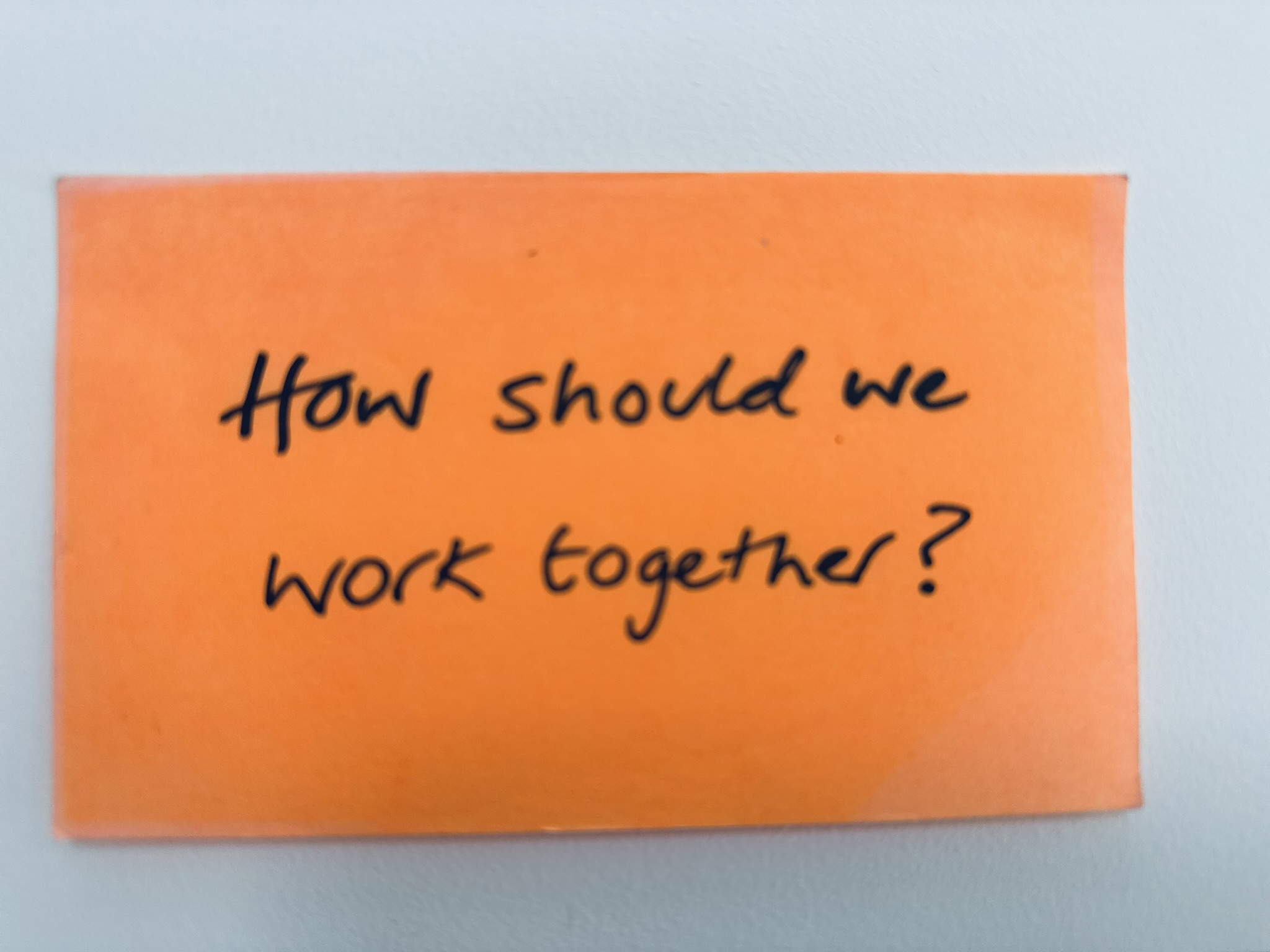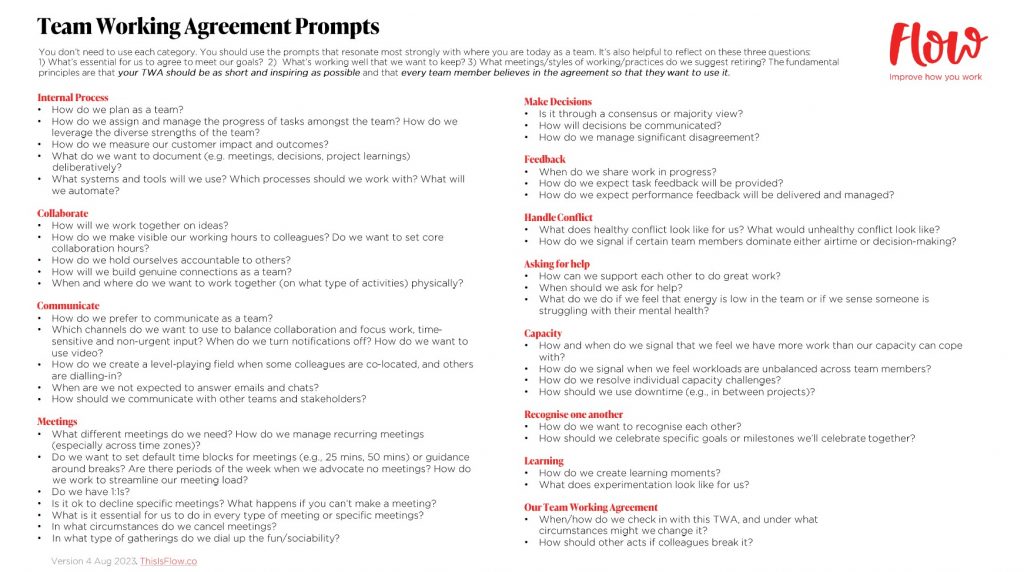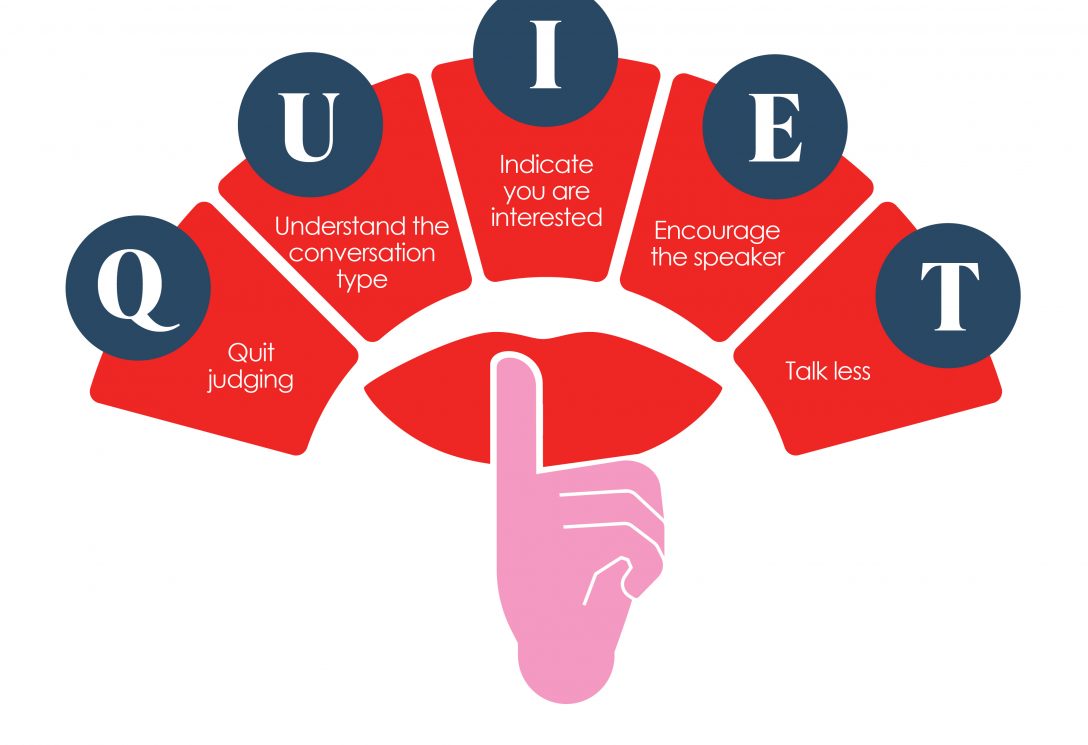How to create a Team Working Agreement

You know from personal experience of the teams you’ve been part of that they can feel very different and achieve very different levels of success. When you bring different personalities together with different expectations, motivations and working habits, the early stages of teamwork involve establishing healthy dynamics. It’s not uncommon for frustrations to surface or remain unspoken whilst still undermining the team’s potential. When you add different working locations, time zones and cultural differences to the mix, coordination and communication are tested further.
Identity and whether core emotional needs are being met are typically at the heart of conflict between colleagues, cross-team conflict and less successful outcomes. And this operates typically outside of our awareness. Creating your team story is a powerful way for team members to develop a shared identity, feel appreciated about who they are and identify what they want to become famous for.
Defining your teams’ values is a crucial first step in helping members feel energised and inspired. The next most important question to answer as you shape your team story is ‘how will we behave based on our values?’
What is a Team Working Agreement?
Team Working Agreements have long been used by software teams working in Agile environments to start working together quickly and establish behavioural standards of how team members work together.
In the post-pandemic era and the ramp-up of hybrid work, where flexibility means different things to different team members, Team Working Agreements (TWAs) are used more widely by teams who want to review the habits and practices picked up over the last few years. Creating norms and a social contract for how a team operates, they are also known as ‘Team Operating Manuals’. They are a great compliment to colleague operating manuals that share how individuals add value to teams.
We’re usually part of several teams simultaneously, and the lifecycle and composition of teams will continue to evolve. What remains constant is building teams that can think together and generate new learning, insight, and action. The foundation of great teamwork is learning to work well with colleagues and build stronger relationships. And that’s why TWAs are so valuable.
The Benefits of Team Working Agreements
In organisations, there is an incredible amount of messages flying around. We operate in vast networks of relationships, and understanding who said what, how people interpret what was said and who knows what, is impossible to know. Lack of clarity causes anxiety, and lack of clarity causes confusion. When there are multiple moving parts, complexity causes further confusion.
Lack of clarity is a drag on personal and team performance. Sometimes we are unmotivated when the real issue is a lack of clarity. When we don’t clarify, we open the door to confusion. TWAs reduce confusion by clarifying what matters to all of us, how we should behave with each other, how we’ll achieve great outcomes and the experience we want to have along the way.
They’re not a silver bullet. Conflicting priorities and weak capability are just two factors preventing teams from performing to their potential. So a good Working Agreement doesn’t guarantee success. But they help build trust, team cohesion and stronger collaboration by building shared expectations. Their two key benefits are:
1.They help accelerate understanding of working preferences
As mentioned, working in teams is only sometimes plain sailing because we often have different values that are important to us and ways in which we prefer to work. What is a ‘big deal’ for you might mean little to other colleagues. This means that we can become ‘triggered’ by seemingly harmless actions from others. By opening up a discussion on working styles (how you like to be involved in decisions, do you believe in core collaboration hours, how you prefer to receive feedback, how you treat deadlines, how comfortable you are with risk, when you want to switch off from work etc.), you identify the common ground and help to reduce stresses caused by a lack of mutual understanding.
2.You know how you’ll work through difficulties before they occur
Whilst you can’t predict the exact nature of future challenges and disagreements, a TWA can help you to manage the situation better when they do. You help diffuse tension and reduce interpersonal conflict if you’ve already considered how you handle conflict and resolve significant differences in opinion. Think back to when things haven’t gone so well, and there has been tension in the team. Talk through how an agreement in this space could help.
Creating a Team Working Agreement
Many different agreements could go into a TWA. As a prompt to generate discussion, I’ve included questions in 12 categories. But you should refrain from using each category and shouldn’t write up your TWA as a dry Q&A list. Instead, it would be best to use the prompts that resonate most strongly with where you are today as a team. Some team members have high levels of inter-team collaboration; others may work closely with colleagues in different countries. Some teams may have a high proportion of new starters. It’s also helpful to reflect on these three questions:
- What’s essential for us to agree to meet our goals?
- What’s working well that we want to keep?
- What meetings/styles of working/practices do we suggest retiring?
The fundamental principles are that your TWA should be as short and inspiring as possible and that every team member believes in the agreement so that they want to use it.
You can download the Team Working Agreement Prompts here.

Living your Agreement
Agreements serve the existing team and help onboard new team members. Your TWA is a living document that constantly evolves. They become more valuable the more visible they are. If you don’t feel that a colleague is acting in line with the agreement, it should permit you to call out the misalignment in a non-confrontational way. Team Agreements will only work if there is a sense of shared ownership and responsibility and they are enforced by mutual agreement.
They also become more valuable as you improve them, requiring you to revisit them frequently. Use 10 minutes of a meeting to reflect on certain areas of your agreement and check that the principles are supporting the team to do great work. What might you need to tweak? In a month, has that change made a difference?
In summary, TWAs help create more joy, ease and efficiency by helping teams see things in the same way and get things done in ways that suit them best. They support newly formed and existing teams to create a sense of belonging and shared identity that is their signature of delivering exceptional outcomes.
Flow is a ways of working company. We help you to create the conditions where your people can flourish, where decisions, meetings and ideas can flow. If you’d like to discuss how we can help you to improve your Team Practices, get in touch at hi@thisisflow.co



